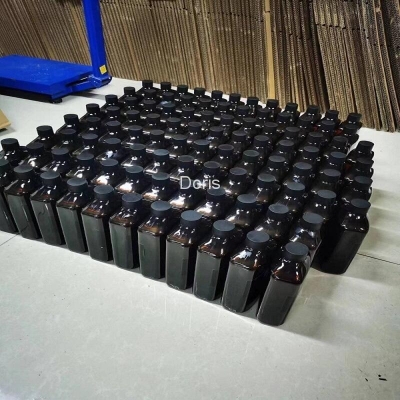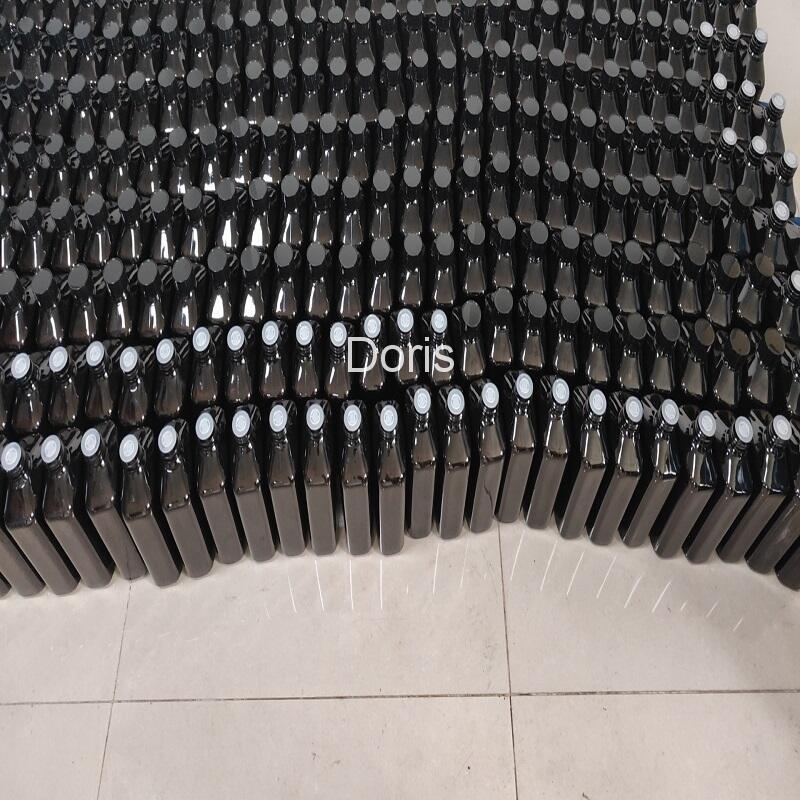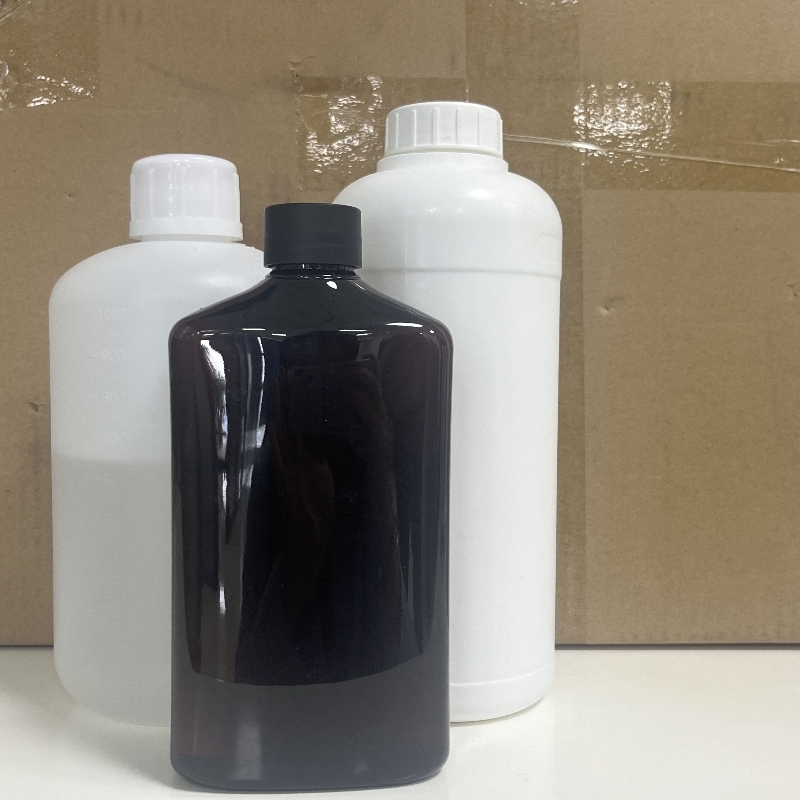Identification of dragon's blood in traditional Chinese medicine by visible convolution transform FTIR
-
Last Update: 2007-01-31
-
Source: Internet
-
Author: User
Search more information of high quality chemicals, good prices and reliable suppliers, visit
www.echemi.com
[Abstract] Objective: to establish a visual convolution transform infrared spectroscopy method for the identification of dragon's blood Methods: to collect FTIR spectra, cluster analysis, visual convolution transform software and correlation coefficient to distinguish and qualitatively identify Draconis Draconis from different areas Results: the visible convolution transform infrared spectrum of 16 samples showed that there were significant differences between domestic and imported dragon's blood and grass's blood, which were consistent with the results of infrared spectrum and cluster analysis This method can effectively identify the different sources of Draconis Draconis, and the results are basically consistent with the classical morphological identification method Conclusion: this method is a rapid, simple and low-cost new analytical technique, which can be used for the qualitative identification of Chinese medicinal materials of Dracaena Draconis [Key words] Fourier transform infrared spectroscopy; Dragon's blood; visible convolution transform; identification of dragon's blood is a common Chinese medicine, which is resin Dracaena cochinchinensis (Lour.) s.c.chen, a Liliaceae plant, is a resin obtained from the fatty wood extracted by ethanol, and the resin from the fruit of Dracaena cochinensis (Lour.) s.c.chen, an import Draco B1 Dragon's blood, also known as blood Panax notoginseng, belongs to Polygonum paleaceum wAL1, whose efficacy is different from that of dragon's blood Domestic and imported Dracaena Draconis have the same clinical effects in hemostasis, antiphlogistic, stasis dispersing and pain relieving, but their prices are quite different, and it is difficult to distinguish them in appearance The traditional identification of Draconis Draconis mainly depends on its properties, physical and chemical properties, thin-layer chromatography and so on These identification methods are cumbersome and need to deal with the samples For a long time, Fourier transform infrared spectroscopy (FTIR) has been one of the powerful tools for the structure identification of pure compounds In recent years, it has also been reported in the fields of complex systems such as cell analysis and traditional Chinese medicine analysis In this study, infrared spectroscopy was used to collect the spectra of dragon's blood samples from different places of origin, and cluster analysis was carried out with opus analysis software The subtle feature information hidden in the original spectral signal was obtained by information transformation, and the image display of infrared spectrum fingerprint was realized by visualization technology The difference of fingerprint was compared by correlation coefficient method Materials and methods 1.1 four samples of Dracaena Draconis and two samples of Dracaena Draconis from different places were provided and identified by Professor Mi Hewu, Department of pharmaceutical analysis, School of pharmacy, Second Military Medical University No l-7 (Guangxi), 9, LL (Hainan), L4, 16 (Yunnan) are domestic Dracaena Dracaena, 8, l0, 12 (Singapore) are imported Dracaena Dracaena, 13, L5 (Yunnan) are Dracaena Dracaena Vector22 Fourier transform infrared spectrometer, Opus clustering analysis software (Bruker company, Germany), convolution transformation analysis software 1.2 the experimental parameters are 1.2.1 The amount of sample is about 1-3mg When the amount of sample is less than 1mg, the spectral information is weak, but the amount of sample is more than 3mg, the amount of sample is too much, which leads to the blurring of potassium bromide sample sheet and poor spectral reproducibility 1.2.2 the resolution of the sample is about 2mg, which is measured when the resolution is set to 2, 4, 8 and 16 / cm respectively When the resolution is 2 / cm, the spectral information is rich, but the influence of noise is also large; when the resolution is greater than 8 / cm, part of the sample information is lost In this experiment, the resolution is 4 / cm 1.2.3 the number of scans is set to 8, 16, 32, 64 and 128 respectively The results showed that the more scanning times, the less noise effect, but the longer scanning time, the experiment used 32 scanning times 1.3 spectral analysis 1.3.1 take a few dry samples from the infrared spectrogram, press the tablets according to the conventional potassium bromide, the scanning range is 4000-400 / cm, the resolution is 4 / cm, and the scanning times are 32 1.3.2 spectral data processing The spectral clustering analysis adopts vector normalization preprocessing, and directly uses opus clustering analysis software to cluster based on the average distance of the clusters; the collected infrared spectrogram is processed by convolution transformation to obtain its subtle feature information, and the computer image of the infrared fingerprint is realized by visualization technology, and the image is regarded as a random vector for correlation coefficient discrimination Results 2.1 the infrared spectrum and cluster analysis of 16 samples showed that there were differences between the domestic and imported samples of Dracaena Draconis, Dracaena Draconis, Dracaena Draconis, Dracaena Draconis, Dracaena Draconis, Dracaena Draconis, Dracaena Draconis, Dracaena Draconis, Dracaena Draconis, Dracaena Draconis, Dracaena Dracaena Draconis, Dracaena Dracaena Draconis, Dracaena Dracaena Draconis, Dracaena Dracaena Draconis 2.2 the visible convolution spectrum fingerprint spectrum of the samples of dragon's blood, dragon's blood and dragon's blood were significantly different, which was consistent with the results of infrared spectrum and cluster analysis 2.3 correlation coefficient the average correlation coefficient of 11 samples of dragon's blood made in China is more than 0.94, which shows that the similarity is very high The average correlation coefficient of dragon's blood made in China and imported is less than 0.24, the average correlation coefficient of dragon's blood made in China and grass is less than 0.08, and the average correlation coefficient of dragon's blood made in imported and grass is less than 0.22 The average correlation coefficient shows good results 3 discussion At present, it is common to identify traditional Chinese medicine by infrared spectroscopy For traditional Chinese medicine samples containing a large number of starch, cellulose, sugar and other complex components, their infrared spectra are very similar, so it is difficult to identify them directly by using the original spectrum peak location attribution method For spectral clustering analysis, vector normalization pretreatment is used, and clustering is based on the average distance of clusters The results are satisfactory In this experiment, the convolution spectrum is used to process the infrared spectrum data of traditional Chinese medicine The physical and chemical information of traditional Chinese medicine is transformed into mathematical information by convolution transformation, which shows the subtle changes of the infrared spectrum absorption characteristics of traditional Chinese medicine and the differences of the infrared spectrum absorption characteristics of traditional Chinese medicine from different producing areas The convolution spectrum is visualized and output in the form of visual image, which is vivid and vivid It directly improves the understanding and analysis of information In this experiment, the influence factors such as sample loading, resolution and scanning times were investigated It is consistent with the traditional potassium bromide tablet method, but the sample size is 1-3mg Visible convolution transform infrared spectroscopy is a non-destructive testing method for the identification of Chinese herbal medicines Compared with the traditional identification method, it is stable, easy to operate, does not need special experimental conditions, and is easy to unify and standardize The convolution transformation provides a large amount of information, and its intuitive image and data output form are easy to understand and analyze The visible convolution spectrum fingerprint analysis has a unique advantage in the qualitative identification of traditional Chinese medicine, which widens the application of infrared spectrum in the field of traditional Chinese medicine analysis [reference] [1] Zhou Zhihong, Wang Jinliang, Yang Chongren Study on chemical constituents of Dracaena Draconis in China [J] Chinese herbal medicine, 2001, 32 (6): 484-486
This article is an English version of an article which is originally in the Chinese language on echemi.com and is provided for information purposes only.
This website makes no representation or warranty of any kind, either expressed or implied, as to the accuracy, completeness ownership or reliability of
the article or any translations thereof. If you have any concerns or complaints relating to the article, please send an email, providing a detailed
description of the concern or complaint, to
service@echemi.com. A staff member will contact you within 5 working days. Once verified, infringing content
will be removed immediately.







